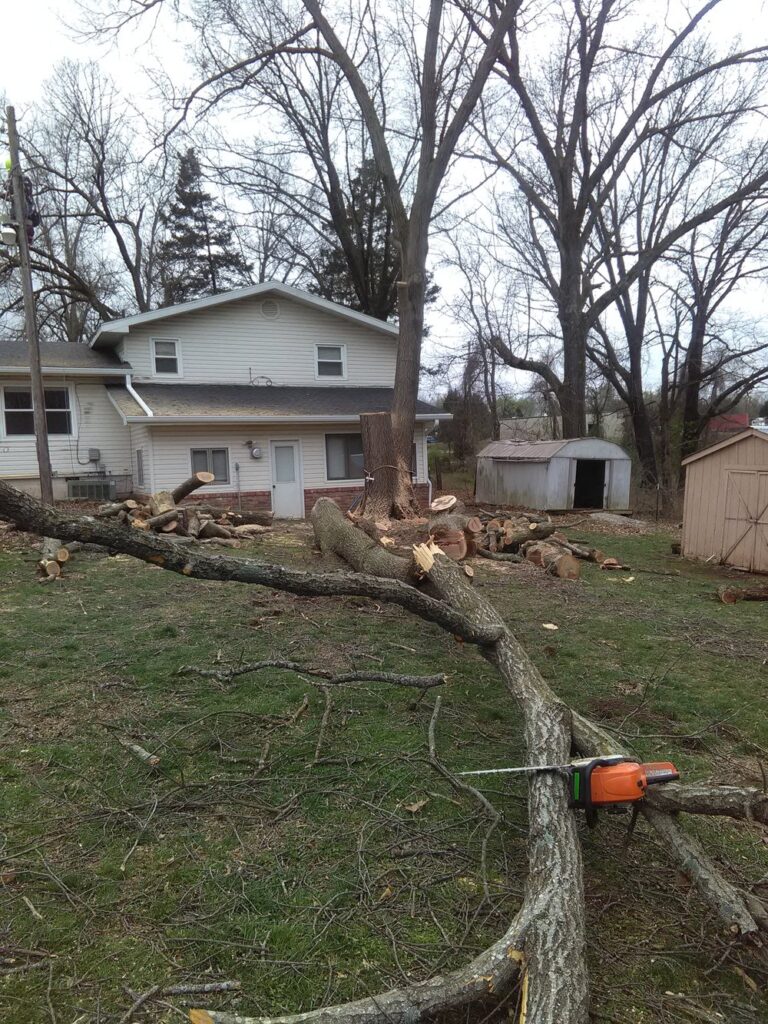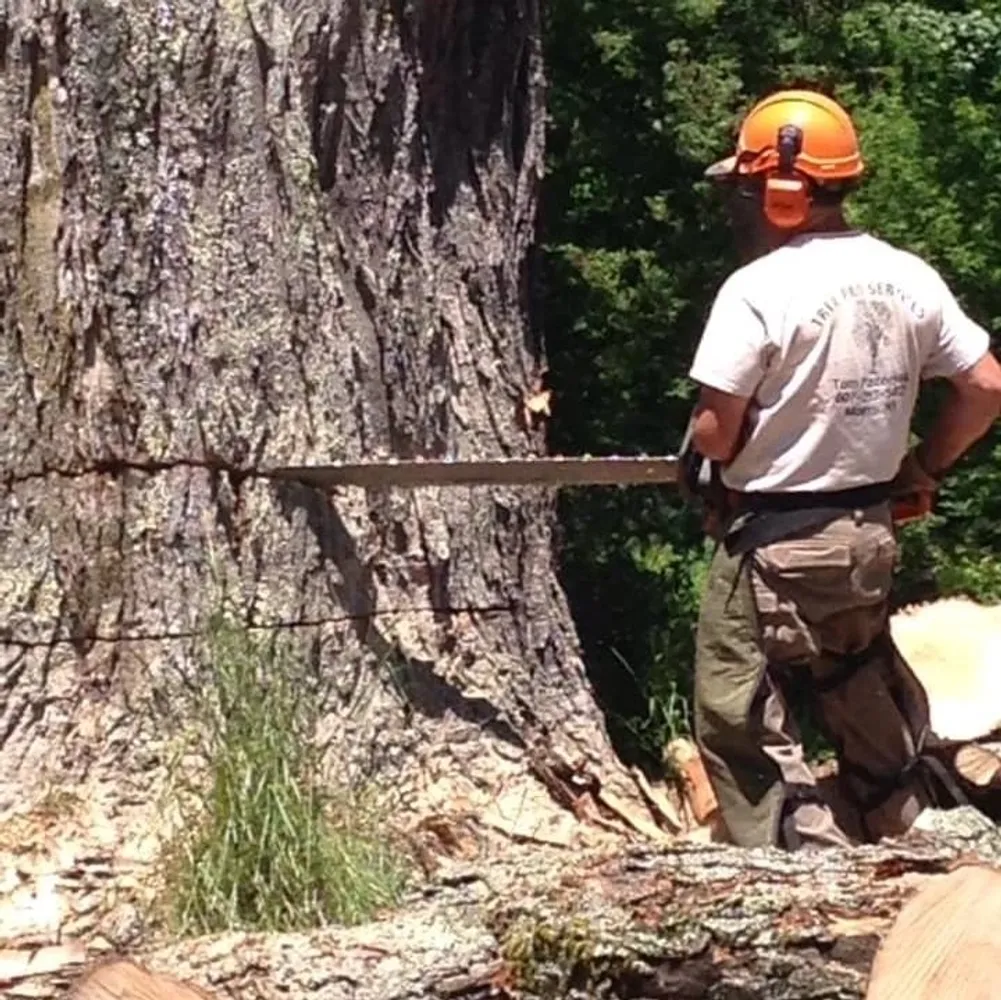Tree pruning is an essential part of maintaining the health and aesthetics of your trees. However, many homeowners often overlook this important task because they are unsure of the costs involved. In this article, we will explore the basics of tree pruning, the factors that influence pricing, different pricing structures, and how to budget for this service. Additionally, we will discuss the benefits of hiring a professional tree pruner and the questions you should ask before making a hiring decision. By the end of this article, you will have a better understanding of tree pruning costs and pricing, allowing you to make informed decisions for your property.
The Basics of Tree Pruning
Before delving into pricing details, let’s first clarify what tree pruning involves. Tree pruning is the process of selectively removing certain branches or stems from a tree to promote healthier growth and maintain its structural integrity. By removing dead, damaged, or diseased branches, as well as properly spacing out branches, tree pruning helps reduce the risk of falling limbs, improves air circulation, and enhances the overall appearance of the tree.
Tree pruning cost can vary depending on various factors such as tree size, location, species, and the complexity of the job. It’s essential to allocate a realistic budget to ensure that the pruning is done correctly by qualified professionals.
Tree pruning is a crucial aspect of tree care that should not be overlooked. It is a delicate procedure that requires a deep understanding of tree biology and the correct techniques to ensure the tree’s health and vitality. Proper pruning can help trees withstand harsh weather conditions, resist diseases, and thrive for years to come.
What is Tree Pruning?
Tree pruning is a horticultural practice that requires knowledge of tree biology and proper pruning techniques. It involves making careful cuts at specific locations on the tree to encourage new growth and discourage potential issues.
When done correctly, tree pruning can stimulate the tree’s natural defense mechanisms, promoting the development of strong, healthy branches. It is essential to understand the tree species’ growth patterns and characteristics to determine the most effective pruning methods for optimal results. Learn more about natural defense mechanisms at https://sphweb.bumc.bu.edu/otlt/mph-modules/ph/ph709_defenses/ph709_defenses_print.html

Why is Tree Pruning Necessary?
Tree pruning is necessary to maintain the health and safety of your trees. By removing dead or diseased branches, you prevent the spread of diseases and pests to healthy parts of the tree. Additionally, pruning helps shape the tree, allowing it to grow in a desirable form and size. Moreover, regular pruning reduces the risk of branches falling during storms or high winds, which can cause damage to property or pose a safety hazard to people.
Regular tree pruning also promotes fruit production in fruit-bearing trees and enhances the overall aesthetic appeal of ornamental trees. It is a proactive measure that not only benefits the tree’s health but also contributes to the beauty of your landscape. Properly pruned trees can increase property value and create a safer environment for everyone around.
Factors Influencing Tree Pruning Costs
When it comes to pricing tree pruning services, several factors come into play. Understanding these factors will help you evaluate and compare quotes from different arborists or tree service companies.
Tree pruning is a crucial aspect of tree maintenance that not only enhances the aesthetic appeal of your landscape but also promotes the health and longevity of your trees. By investing in professional tree pruning services, you can ensure that your trees remain structurally sound and free from potential hazards. Click here to learn more about potential hazards.
Size and Number of Trees
The size and number of trees to be pruned directly affect the overall cost. Larger trees with more branches require more time and effort to prune properly. Additionally, if you have multiple trees that need pruning, there may be a discounted rate for the additional work.
It’s important to consider the age of the trees as well, as older trees may require more intricate pruning techniques to maintain their health and vitality. Professional arborists assess each tree individually to determine the best approach for pruning while considering the overall landscape design.
Tree Species and Condition
The type of tree and its current condition can also impact the pricing. Some tree species are more difficult to prune due to their unique growth patterns or delicate branches. Likewise, if the tree is severely damaged or diseased, additional precautions and specialized equipment may be required, leading to higher costs.
Arborists take into account the specific needs of each tree species, ensuring that the pruning process is tailored to promote optimal growth and structural integrity. By understanding the unique characteristics of different tree species, arborists can provide targeted pruning services that benefit the overall health of the trees.
Location and Accessibility
The location of the trees and their accessibility plays a role in the pricing as well. Trees located in tight spaces or near structures may require more careful planning and maneuvering, which can increase the cost. Additionally, if the tree is in a remote or challenging-to-access area, additional equipment or manpower may be needed, impacting the overall pricing.
Professional arborists are equipped with the necessary skills and tools to navigate challenging pruning scenarios, ensuring that the job is completed safely and efficiently. By considering the location and accessibility of the trees, arborists can develop strategic pruning plans that prioritize both the health of the trees and the safety of the surrounding environment.
Understanding Pricing Structures
When requesting quotes for tree pruning, it’s essential to understand the different pricing structures that arborists may use. This knowledge will help you compare quotes accurately and make an informed decision.
Tree pruning is a specialized skill that requires expertise and precision. Arborists undergo training to understand the biology of trees, proper pruning techniques, and safety protocols. When hiring an arborist, you are not just paying for the time spent on your trees but also for their knowledge and experience in maintaining tree health and aesthetics.
Flat Rate vs Hourly Rate
Some tree pruners charge a flat rate for a specific task, regardless of the time taken to complete it. This pricing structure offers you the advantage of knowing the total cost upfront. Alternatively, some professionals charge an hourly rate, accounting for the time spent working on your trees. While an hourly rate may seem uncertain, it can be beneficial for smaller projects that require less time.
Flat rate pricing is common for standard tree pruning jobs such as crown thinning or deadwood removal. On the other hand, hourly rates are more prevalent for complex tree trimming projects that involve intricate cuts or pruning of large, hard-to-reach trees.
Additional Costs to Consider
Aside from the primary pruning costs, there may be additional costs to consider. These can include disposal fees for removing the pruned branches, stump grinding if the tree has been previously removed, or any necessary permits if the trees are protected or located within a protected area. Always inquire about these potential extra costs when obtaining quotes to avoid any surprises during the project.
Disposal fees can vary depending on the amount of green waste generated during the pruning process. Some arborists include this cost in their initial quote, while others may charge it separately based on the volume of branches and debris. Stump grinding is another factor to consider, especially if you plan to replant in the same area or want to improve the aesthetics of your landscape. It’s essential to discuss these additional services with your arborist to understand the complete scope of work and associated costs.

How to Budget for Tree Pruning
Now that you have an understanding of the factors influencing tree pruning costs and the pricing structures, it’s time to consider how to budget for this essential service. Proper budgeting for tree pruning ensures the health and aesthetics of your trees while also maintaining the safety of your property.
Estimating Your Tree Pruning Costs
Start by evaluating the number and size of trees that require pruning. This will help establish a rough estimate of the work involved. Take advantage of free consultations offered by some professionals to obtain accurate quotes tailored to your specific needs. Don’t hesitate to request detailed breakdowns of the costs for better transparency.
Furthermore, consider the type of pruning required for your trees. Whether it’s crown thinning, crown raising, or deadwood removal, each type of pruning comes with its own set of costs. Understanding the specific needs of your trees will help you budget more effectively.
Saving Money on Tree Pruning
If budget constraints are a concern, several strategies can help you save money on tree pruning. Consider getting multiple quotes from different companies to compare pricing. However, it’s important to balance cost concerns with the reputation and experience of the professionals.
Moreover, you can explore the option of bundling tree pruning with other services such as tree removal or stump grinding to potentially negotiate a better rate. Some tree care companies offer package deals that can help you save money in the long run.
Additionally, timing can also affect pricing; consider scheduling the tree pruning during off-peak seasons when professionals may offer discounts to fill their schedules. By planning ahead and booking the service during quieter times, you may be able to secure a more cost-effective rate without compromising on the quality of work.
Hiring a Professional Tree Pruner
While some tree pruning tasks can be done by homeowners, hiring a professional tree pruner offers numerous benefits that make it worth considering.
Benefits of Hiring a Professional
Professional tree pruners have the expertise and experience to assess your tree’s needs accurately and employ proper pruning techniques. They are knowledgeable about tree biology and understand how to promote healthy growth while minimizing any potential risks. Professionals also have the necessary equipment and insurance coverage to handle the job safely and efficiently.
Questions to Ask Before Hiring
Before hiring a tree pruner, ask the following questions to ensure you choose the right professional for the job:
- Are you licensed and insured?
- Can you provide references?
- What pruning techniques do you use?
- Do you clean up and dispose of the pruned branches?
- What measures do you take for safety?
By asking these questions, you can gain insight into their qualifications, work ethics, and professionalism, helping you make an informed decision.
Understanding tree pruning costs and pricing allows you to prioritize this essential maintenance task and budget accordingly. By considering the factors that influence pricing, understanding different pricing structures, and evaluating the benefits of hiring a professional, you can ensure your trees receive the care they need while making a sound financial decision. So, take the time to assess your tree’s needs, get multiple quotes, and choose a professional tree pruner who meets your requirements. With proper tree pruning, you can enhance the beauty and longevity of the trees on your property.
Other resources: Essential Tree Pruning Tools for Homeowners
